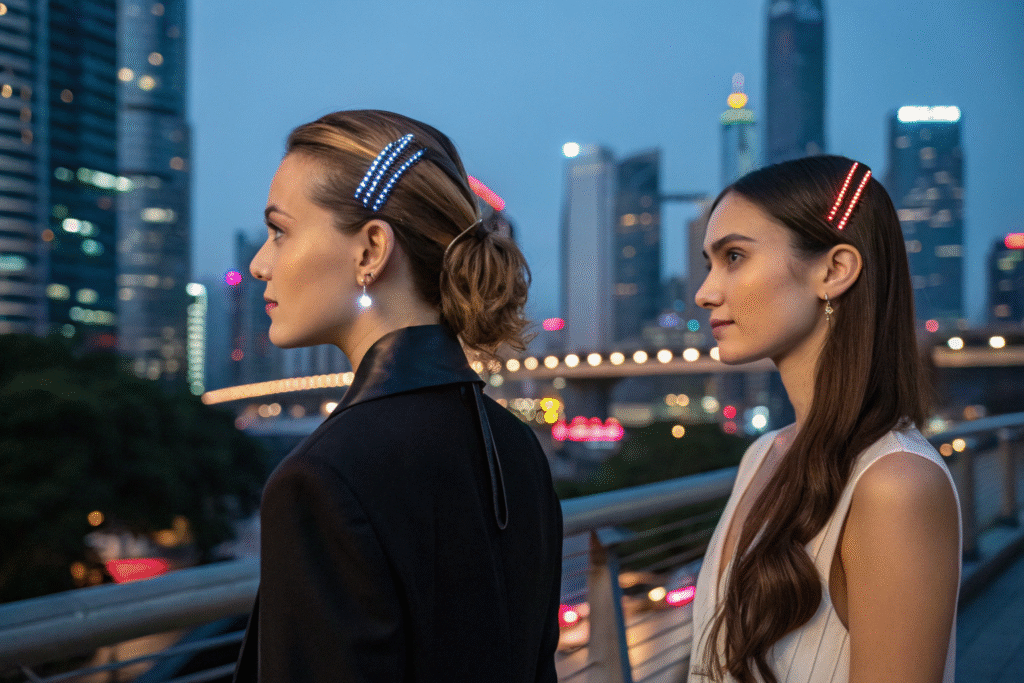Smart hair barrettes are evolving from simple decorative pieces into intelligent accessories. They now combine fashion with technology, offering health tracking, personalized styling, and seamless connectivity. This article explores the key technologies shaping this trend and their value for buyers, retailers, and innovators in the global hair accessory market.
By integrating IoT sensors, AI, smart materials, and connectivity, smart hair barrettes become both stylish and functional, fitting into the growing wearable tech industry.
As a manufacturer and exporter in this field, I see growing demand, especially from U.S. and European buyers, for products that merge beauty with intelligent functions. The industry is entering a new stage, where accessories provide style and real value at the same time.
How Do IoT Sensors Enhance Smart Hair Barrettes?
IoT sensors are transforming barrettes into data-driven tools. They can measure humidity, UV exposure, hair movement, and even stress levels, sending information to a mobile app for real-time insights.
These sensors help users adjust routines and protect hair from environmental damage, making the accessory both decorative and functional.
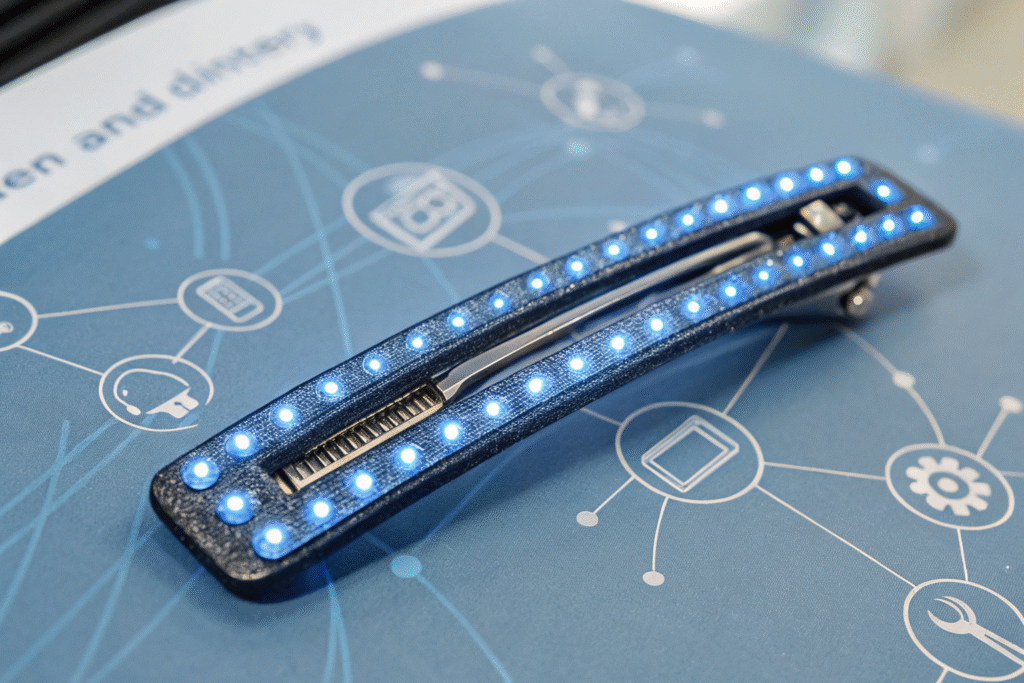
For example, if humidity is high, the app can recommend an anti-frizz spray; if UV levels are strong, it may suggest applying protective serum. This passive monitoring turns hair accessories into personalized care devices.
Can Smart Barrettes Monitor Hair Health?
Yes. They can track hydration, scalp oil, and overall condition. This helps users decide when to wash or apply treatments. Similar technology in smart hair brushes could be adapted for barrettes. UV sensor integration can also help prevent sun damage.
Do Sensors Improve User Experience?
Absolutely. If a barrette alerts when hair is dry enough to style, it saves time and prevents heat damage. This value makes the product attractive to retailers and platforms like Amazon and Alibaba.
What Role Does AI Play in Personalized Styling?
AI turns barrettes into personal hair advisors. By analyzing sensor data, AI can suggest routines, styling techniques, and product recommendations.
AI integration offers real-time styling guidance, helping users achieve healthier, better-looking hair.
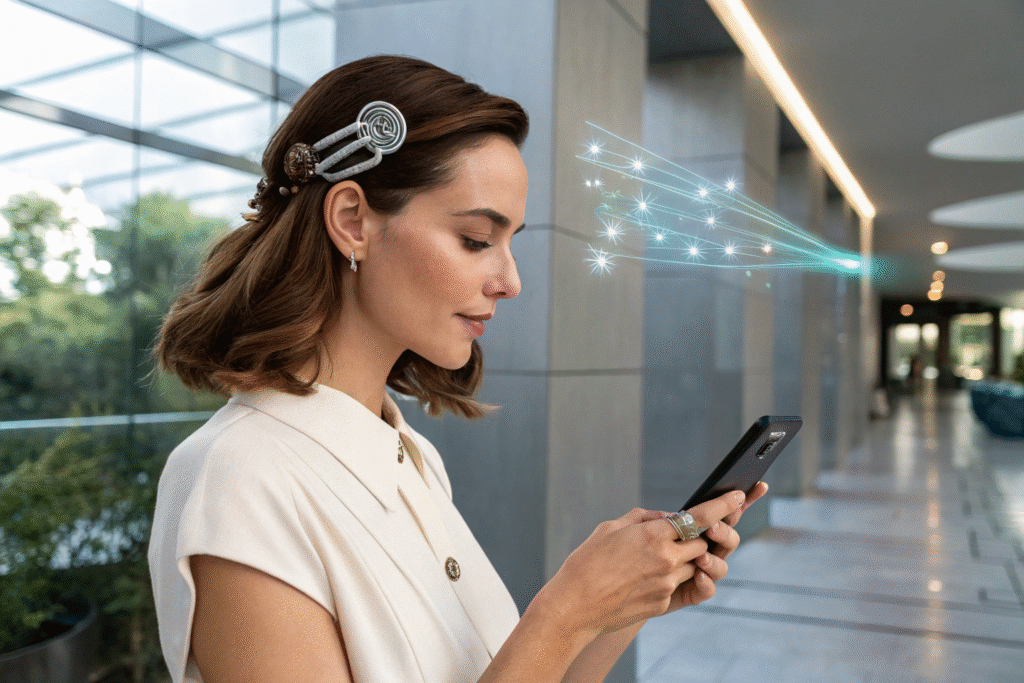
Can AI Suggest Hair Products?
Yes. AI-powered barrettes could recommend shampoos, conditioners, or styling sprays based on collected data. For example, integrations with Sephora or Ulta Beauty could link advice with direct product options.
How Does AI Improve Styling Efficiency?
AI can anticipate needs. If rain is forecasted, the barrette might recommend strong-hold spray. With integrations like Google Weather, this advice becomes proactive, making the accessory a practical daily assistant.
Can Smart Materials Make Barrettes Comfortable and Durable?
The challenge is fitting electronics into a small accessory without sacrificing comfort. Smart materials provide the solution. Flexible batteries, conductive fabrics, and nano-coatings allow barrettes to remain stylish and lightweight while housing technology.
Smart materials make barrettes durable, comfortable, and capable of advanced functions.
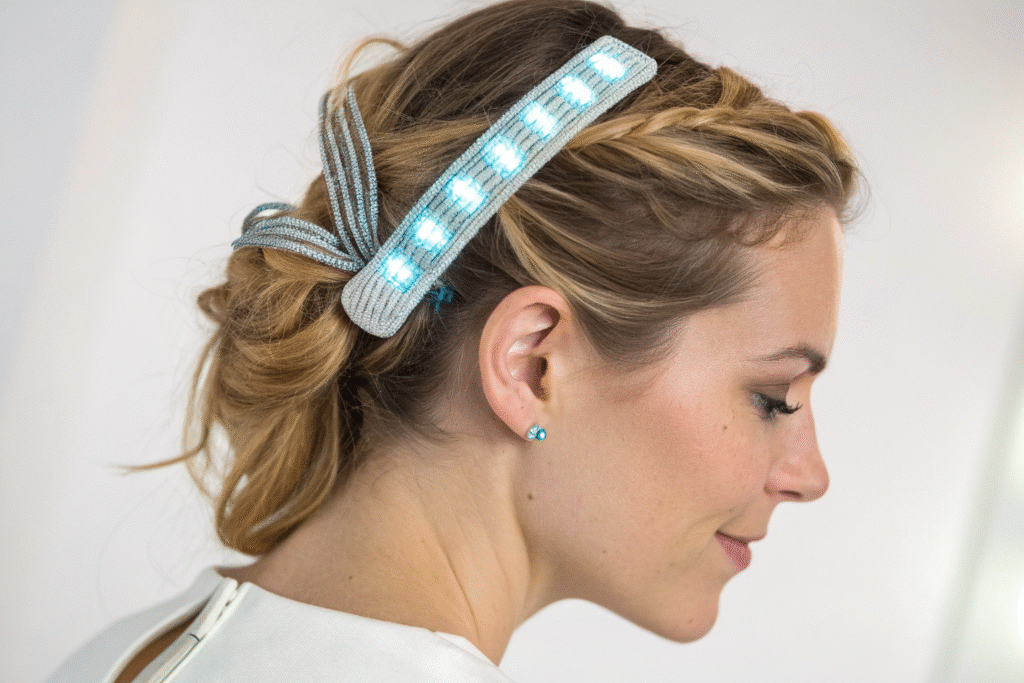
What Are Flexible Power Solutions?
Fiber-based batteries and conductive threads can power sensors invisibly, keeping designs sleek and wearable.
Are Smart Materials Sustainable?
Yes. Many are eco-friendly. Bio-based polymers and recyclable textiles make accessories attractive for sustainability-driven brands like H&M and Zara.
How Does Connectivity Expand User Benefits?
Connectivity is what transforms barrettes into part of the smart ecosystem. With Bluetooth or Wi-Fi, they can sync with apps, smart mirrors, and even home assistants.
Connectivity enhances convenience, enabling integration with personal wellness apps and smart home systems.
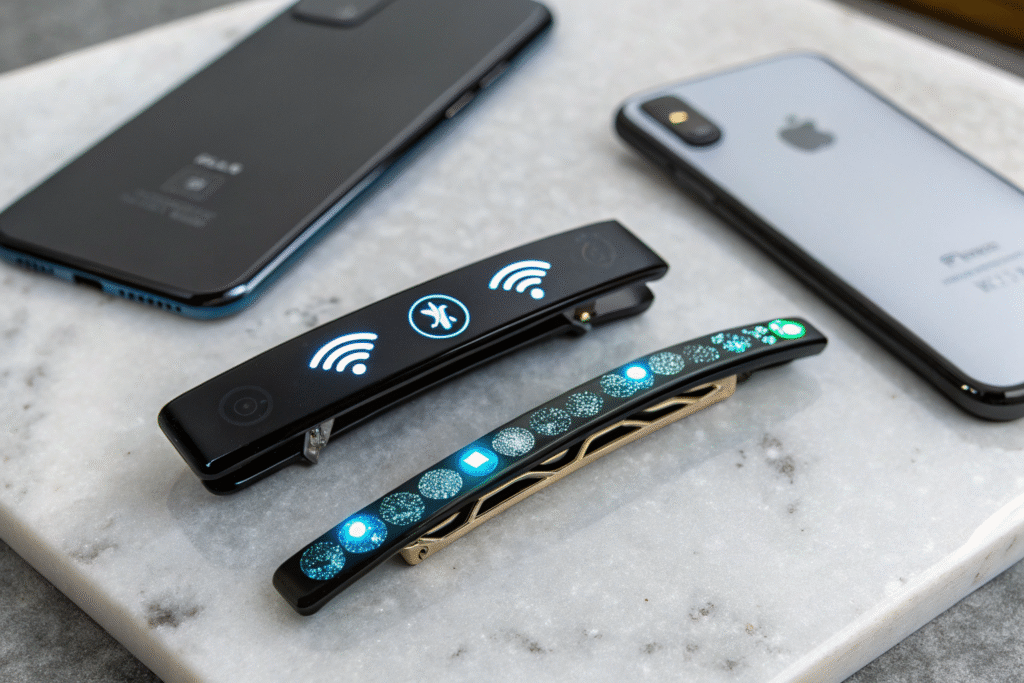
Can Barrettes Work With Smart Homes?
Yes. Imagine asking Amazon Alexa about your hair, and the barrette provides live data. Integration with Google Home expands these possibilities.
How Does Connectivity Benefit Retailers?
For global buyers, connectivity creates higher value and stronger marketing opportunities. Accessories can be positioned not just as fashion but as lifestyle tech—similar to Fitbit or Oura Ring.
Conclusion
Smart hair barrettes are the future of fashion accessories. With IoT sensors, AI, smart materials, and connectivity, they are becoming wearable tech that blends beauty with intelligence. For global buyers and retailers, this opens new markets where accessories are both stylish and functional.
At Shanghai Fumao, we specialize in developing and producing advanced hair accessories for global partners. If you are interested in collaborating on custom smart hair barrette projects, contact our Business Director Elaine at elaine@fumaoclothing.com to discuss your ideas and start production.

